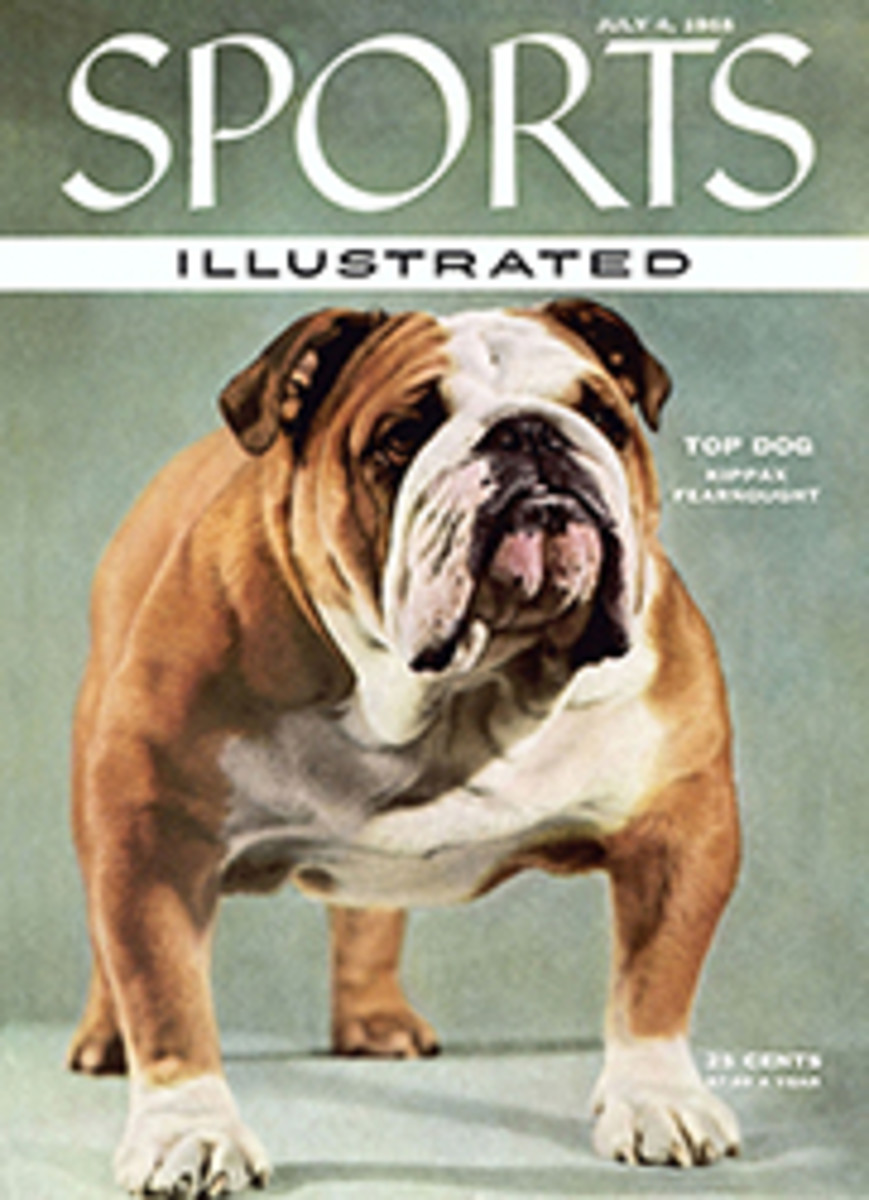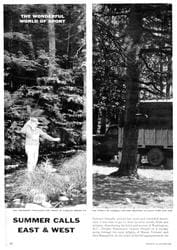
MERCEDES INTRODUCES A NEW NOTE OF CAUTION IN THE DUTCH GRAND PRIX AS ITS GREAT FANGIO-MOSS DUO CONTINUES TO DOMINATE THE CIRCUIT
The last time I visited the little Dutch resort town of Zandvoort its scrubby dunes were a maze of concrete pillboxes, a tangle of barbed wire left by the departing Wehrmacht. But that was 10 years ago. On Sunday, June 19, 1955, the sands had been cleared and a beautiful 2.6-mile race course laid out through the hilly dunes. The occasion was the fifth Dutch International Grand Prix. Some 50,000 people were clustered over the dunes.
Ironically, there was no Formula I event at Zandvoort last year because the Germans couldn't get ready in time. This time they were more than ready, with three silver cars that shimmered in the timid sunlight: the W196 Grand Prix jobs with straight-eight, 270-hp fuel injection engines and short wheelbase "Monaco" chassis—the same machines that swept the board in the Belgian Grand Prix two weeks before when Mercedes' Juan Manuel Fangio and Stirling Moss finished one-two.
The day before the race, Mercedes officials, determined that there must never be another Le Mans disaster, rented the course for trial laps to check crowd safety measures. The big silver cars roared smoothly around the route, which is shaped like a Dutch fisherman's cap. The base and peak of the cap provide a fast kilometer straight, where the swiftest machines can do 140 mph past the grandstands and pit row. At the end of the peak is a banked turn called "Tarzan Corner," from whence the cars weave through a short section immediately behind the pits, then negotiate a left-handed climbing hairpin before they vanish from sight.
When the Mercedes came in from the trials, Team Manager Alfred Neubauer said: "We'll run if provisions are made for a car-wide lane, 600 meters long, leading off from the straight into the pit area. No car can cut into that lane ahead of another." The sponsoring Royal Dutch Automobile Club agreed, and by race-day morning a drying yellow line established the lane.
At starting time, it looked like a tight three-cornered battle between Mercedes and the red Ferraris and Maseratis, with France's blue Gordinis having an outside chance and the "independent" drivers no bet at all. Mercedes occupied the front row of the starting grid: World Champion Fangio on the pole, Stirling Moss, Karl Kling. Fangio's best practice lap was one minute 40 seconds (98.60 mph); Moss was four-tenths of a second slower; Kling took 1.1 seconds longer. Second row belonged to Luigi Musso's Maserati and a Ferrari driven by Le Mans victor Mike Hawthorn, replacing Giuseppe Farina; third row to the Maseratis of Jean Behra and Roberto Mieres and Maurice Trintignant's Ferrari.
As the starter's Dutch tricolor wavered for the final dip, Fangio, jumping the flag by a split second, was already on the move, with Musso's Maserati trying to climb up his tailpipe. At Tarzan Corner, Fangio led around the uphill turn behind the pits; Musso was second, Moss third, Behra's Maserati fourth, Kling's Mercedes fifth; then Trintignant and Hawthorn in Ferraris. Less than five seconds separated the top seven as they vanished from sight in swirl of dust and smoke. The order was the same when they came zooming down the straight to complete the first lap. Fangio's time from a standing start was one minute 52.3 seconds—83.34 mph.
On lap two, the pattern was set for the remaining 98 laps; Fangio in No. 8 Mercedes; Moss in No. 10; Musso, relegated to third with No. 18 Maserati. Kling's Mercedes, sandwiched between the Maseratis of fourth man Behra and sixth place Mieres, was unhappily driven. On lap 12, Kling spun and dived off the road into a wood and out of the race. He escaped unhurt.
The formidable Ferraris were disappointing. Hawthorn in No. 2, never higher than seventh, made a pit stop on lap 20, losing a lap. Monaco conqueror Trintignant in No. 4 eventually crept up to fifth place before retiring on the 67th round with gearbox trouble. As for the Gordinis, it was not their day. Robert Manzon, leader of the contingent in No. 20, was running 10th when, on the 45th time around, his rear axle quit.
THE WALTZ-AROUND
A thin drizzle set in and Herr Neubauer, pacing up and down in front of the Mercedes pit, clamped his hat on tight and trained a nervous eye on Musso's Maserati, but nothing happened. With the precision of animated dolls in a toy ballet, Fangio and Moss waltzed around and around to a classical rhythm, braking, shifting, cornering in perfect unison. Fangio, a truly great champion, tried every trick to shake off Moss, but to no avail. Sometimes he came bombing down the straight with a three-second gain, but along the short section behind the pits, Moss, engine screaming, was back on his tail. Almost unnoticed, Mieres' Maserati—hopelessly behind—clocked the day's fastest lap in one minute 40.9 seconds.
The checkered flag finally dipped on Fangio and Moss, a car-length apart; then on the Maseratis of Musso (54 seconds later) and Mieres; on Eugenio Castellotti's Ferrari and Behra's Maserati, three laps behind; on Hawthorn's Ferrari with a five-lap deficit; on Da Silva Ramos' Gordini No. 22, and independent Veteran Louis Rosier's blue Maserati, seven laps astern; Jacques Pollet's Gordini No. 24, trailing the leaders by eight laps; lastly on Johnny Claes in a yellow Ferrari, touring around 12 laps back. No one was surprised that Fangio had set a new record average of 90.16 mph for the Dutch Grand Prix.
ILLUSTRATION

